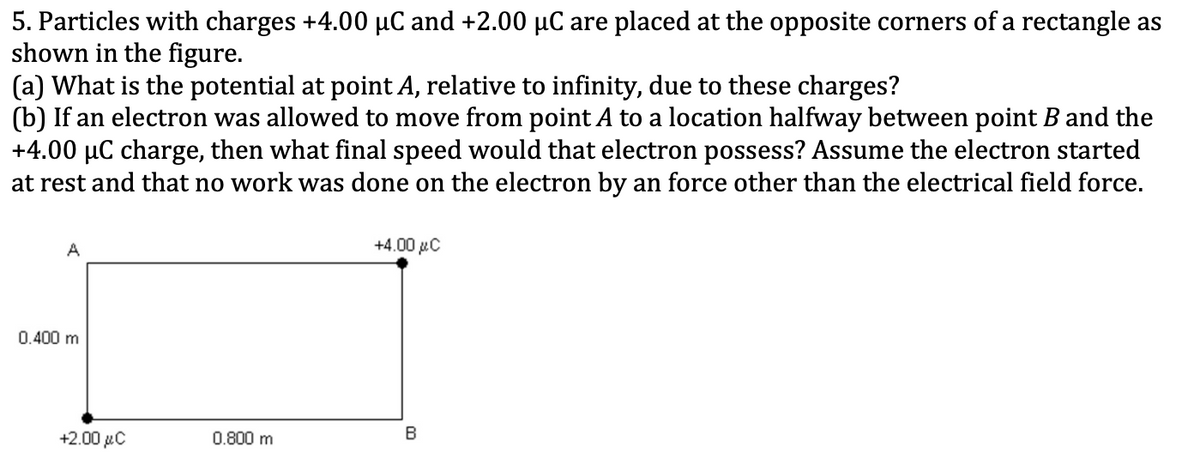5. Particles with charges +4.00 µC and +2.00 µC are placed at the opposite corners of a rectangle as shown in the figure. (a) What is the potential at point A, relative to infinity, due to these charges? (b) If an electron was allowed to move from point A to a location halfway between point B and the +4.00 µC charge, then what final speed would that electron possess? Assume the electron started at rest and that no work was done on the electron by an force other than the electrical field force. A +4.00 µC 0.400 m +2.00 µC 0.800 m
5. Particles with charges +4.00 µC and +2.00 µC are placed at the opposite corners of a rectangle as shown in the figure. (a) What is the potential at point A, relative to infinity, due to these charges? (b) If an electron was allowed to move from point A to a location halfway between point B and the +4.00 µC charge, then what final speed would that electron possess? Assume the electron started at rest and that no work was done on the electron by an force other than the electrical field force. A +4.00 µC 0.400 m +2.00 µC 0.800 m
Related questions
Question

Transcribed Image Text:5. Particles with charges +4.00 µC and +2.00 µC are placed at the opposite corners of a rectangle as
shown in the figure.
(a) What is the potential at point A, relative to infinity, due to these charges?
(b) If an electron was allowed to move from point A to a location halfway between point B and the
+4.00 µC charge, then what final speed would that electron possess? Assume the electron started
at rest and that no work was done on the electron by an force other than the electrical field force.
A
+4.00 xC
0.400 m
+2.00 µC
0.800 m
В
Expert Solution
This question has been solved!
Explore an expertly crafted, step-by-step solution for a thorough understanding of key concepts.
This is a popular solution!
Trending now
This is a popular solution!
Step by step
Solved in 3 steps with 1 images
